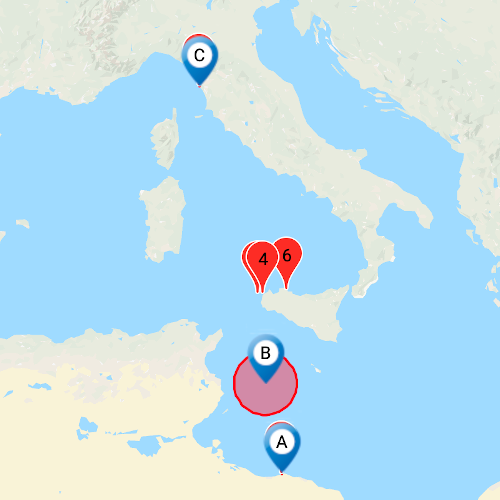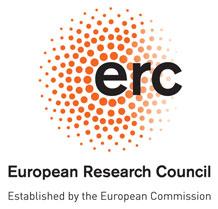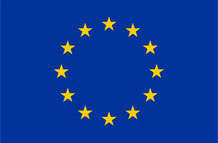The Tuscan Sources
The Tuscan data is taken from the state archives in Pisa and Livorno. By the mid-sixteenth century, the Medici family had secured hereditary rule over Florence and its territories, and Cosimo I was made the first Grand Duke of Tuscany in 1569. The port of Livorno would be one of the regime’s greatest achievements. Thanks to innovative policy and enormous investment, it was transformed from a small fortress in a marsh into the seventeenth-century boom town of the Mediterranean, overtaking nearby Pisa as Tuscany’s principal international port. It became famous as a cosmopolitan centre and hosted a number of foreign trading communities: Sephardic Jews, Englishmen, Dutchmen, Armenians, and Greeks were among the most important traders resident in the port.
Despite the growth of Livorno, jurisdiction over maritime averages was retained by the court of the Consuls of the Sea in Pisa (Consoli del mare di Pisa): shipmasters thus had to come to Pisa to declare their GAs. Records of the all cases coming before the Consuls are preserved in the Pisan state archive, providing a rich cross section of maritime activity taking place in the early modern Mediterranean. The archival series runs from c.1590 until the Napoleonic era: the database provides a small sample of this rich data, comprising all GAs adjusted in the years 1600, 1640, 1670 and 1700, as well as a handful of other cases, numbering around 60 cases in total.
GA records from the Pisa state archives include both an accident report and a calculation for the redistribution of damages. The accident reports are witnessed by members of the ship’s crew. They can thus provide us with details about the ship, it’s voyage, the accident that befell it, and biographical information about those on board. The calculation, meanwhile, provides valuable data on the commodities being transported and their values. Pisan GA cases usually included two accident reports: one was drawn up in the first Christian port that could be accessed after the accident, while the second was a clean copy drawn up by the chancellor or notary of the court when the case was presented before the Consuls. The former was usually referred to as a consolato, the second as a testimoniale. This distinction has been applied in the database for ease of use, though it is not always consistently adopted in the sources. The two documents usually provide identical or near-identical narratives: when this is the case, a full transcription of one of the documents is provided. When they differ significantly, a transcription has been provided of both.
The calculations in the first half of the seventeenth century were carried out by two merchants who were selected by lot: one had to be a recognised Florentine merchant, and the other a recognised Pisan merchant. Around the 1650s the system appears to have fallen into disuse, and two calculators were selected at the discretion of the Consuls. Little is known about there identity, though the Consuls drew on a wide range of candidates. The calculators appear to have used the bill of lading to draw up their calculations, usually estimating prices based on the market price in Livorno.
Sometimes a shipmaster made a maritime accident report before the governor of Livorno in order to prove that he was not liable for damages but decided not to take the case any further. This was usually because the damage was only 'particular Average', i.e. damage received directly at the hands of a casus fortuitus, which was therefore not eligible for GA. These accident reports are housed in the state archive in Livorno. A representative selection of the data available from these reports has been entered into the AveTransRisk database thanks to work carried by students of the Università della Terza Età in Livorno. These entries roughly cover the period 1650-1720 and are about 200 in number. A short summary of the accident report has been provided. These entries provide us with data on the voyages being carried out by ships calling at Livorno and the accidents that befell them.
The Tuscan data provides a rich indication of the trade being carried out at Livorno, though it is probably not a representative cross sample. For voyages involving only a small number of locally based merchants, GAs could be resolved privately. The official judgement of the Consuls was only needed when the voyage involved merchants who were not physically present, since those not party to a private agreement could not be legally bound to observe it. The Pisan data thus probably overrepresents larger voyages covering longer distances. It nevertheless provides an unparalleled mine of qualitative and quantitative data on maritime trade in the Mediterranean.
View the reports from the Pisan archive View the reports from the Livornese archive
Case Studies
The voyage of the Tre Re in 1640
A example case of General Average
The ship Tre Re, with the Flemish ‘Giovanni di Giovanni’ as captain, was freighted to transport grain from Ancona and Sinigaglia to Livorno. Just out of port, a large storm (at 'A' on the map) and the threat of capsize caused the captain to jettison a large amount of cargo. This saved the ship but a further storm ('B') caused more damage before they reached their destination where the captain made his report to the local authorities.

The voyage of the Il Giovanni Battista in 1649
A case of Particular Average
Just out of Naples (number 1 on the map) and bound for Livorno (2), the Il Giovanni Battista encountered strong winds (A) which tore away the mainsail causing the cargo of wine barrels to knock together, damaging some of them. The captain made his account of these events and the subsequent loss of cargo to the authority in Pisa where a case of Particular Average was declared.
This is a good example of the type of event happening at sea causing loss and leading to a case of PA. It is well documented including the costs of the cargo (the risk) and the damages awarded.

The voyage of the Corvo Volante in 1599
An Atlantic crossing
This Antwerp-based vessel left Brazil with a hold full of sugar for Portuguese Jews in Lisbon and Livorno but, having crossed the atlantic without any adverse events, ran into a storm which lasted several days. During the storm, the captain and crew were forced to jettison some of the cargo to allow better sailing so that they could reach Livorno where the captain made his 'consolato'.
This example of the large distances travelled by ships contains a well documented report of the lost cargo.

The voyage of the La Madonna della Concettione in 1667
Sequestrations and sea-loans
Sailing from Livorno, the ship was trapped in Tripoli for 6 months as the result of an uprising of the peoples of the interior against the inhabitants of the city. When they finally left they were captured by a Barbary corsair and taken back to Tripoli where the ship suffered damage and the crew had to free themselves. On the return passage north, their cargo was sequestered in Trapani because it was claimed that the goods were French. The captain and crew were imprisoned and had to go to court to liberate the vessel taking a total of 10 months. To add insult to injury, they had to bribe officials to be allowed to depart the port.
This case shows a goods example of the use of sea-loans. The freighter requests that those who have assumed the risk, i.e. those who have made the sea-loans, should come together in average along with the master who will contribute a half of the value of the ship and a third of the cargo.

The voyage of the Speranza Incoronata in 1668
An interesting voyage with multiple events
The Speranza Incoronata (probably based in Hamburg) sailed from Russia in the autumn of 1668 laden with Caviar and Leather and bound for Livorno. However, ice caused the vessel to wait out the winter in Arkangel (A & B) before setting off again in the spring, only to encounter storms near Ireland (F & G) and corsair attacks off the north coast of Africa (H) leading to an unscheduled stop in Marseille. Finally, a year and a half after the voyage started, the vessel reached Livorno where the captain made his report.
This voyage shows the complexity of some cases and how multiple events on a long voyage can cause more than one type of average to be declared.



This project has received funding from the European Research Council (ERC) under the European Union’s Horizon 2020 research and innovation programme under grant agreement No 724544
Image Acknowledgements
Abraham Jansz. Storck (1644-1708) - Capriccio of Leghorn (Livorno) - 1401148 - National Trust [Public domain], via Wikimedia Commons